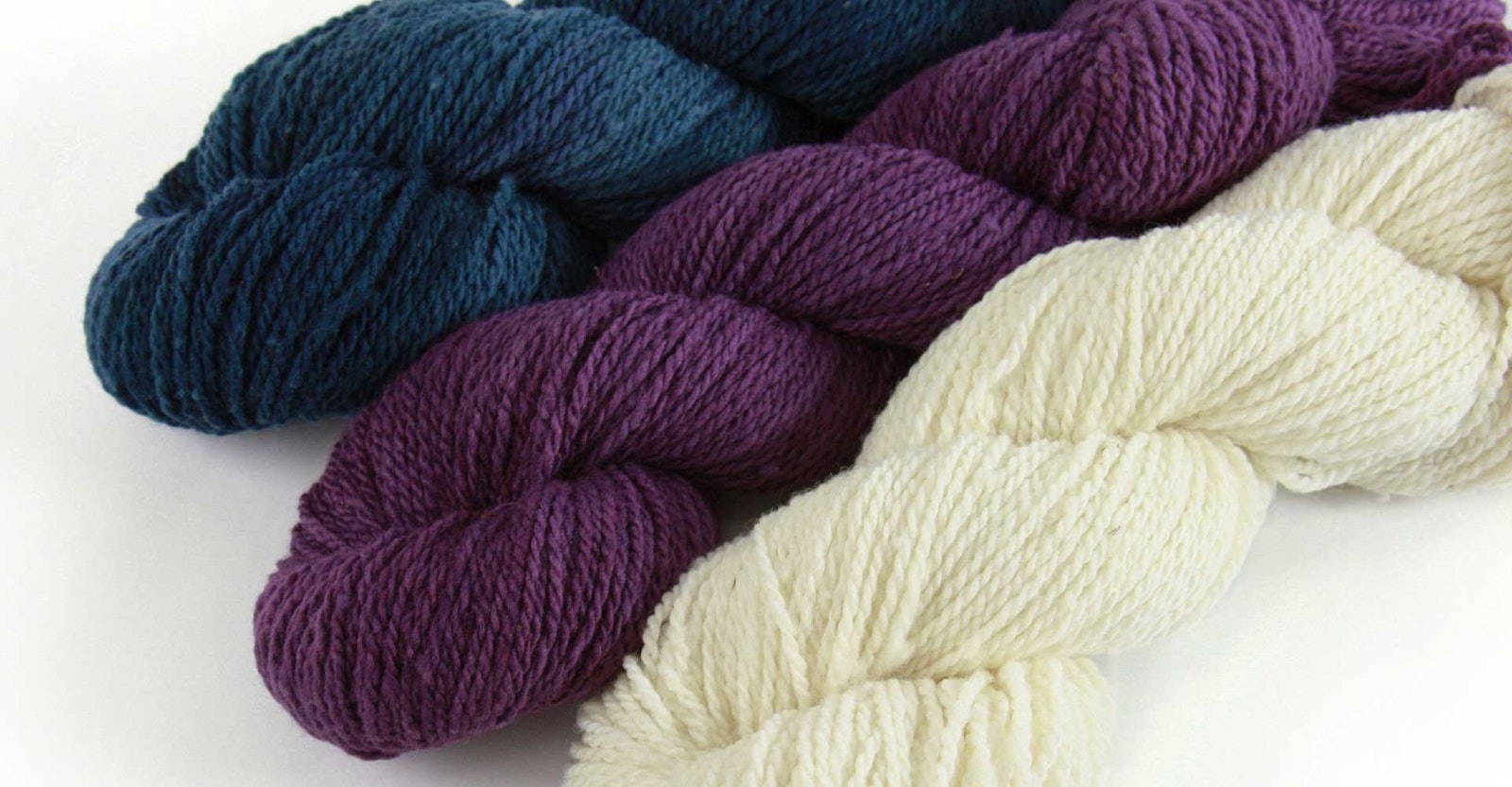We asked Angela to try out Cody by Mountain Meadow Wool, a small mill in Wyoming, to see how it worked as warp and weft. We were surprised and delighted when she sent us a wide variety of samples including one woven on a pin-loom. —Susan
Mountain Meadow Wool operates its mill in the plains of western Wyoming with a mission to sustain the ranches of the American West. The yarns are not just “wool,” they are identified by the sheep breed and some even by the source ranch. The more than 30 yarns vary in weights from 525 to 2,500 yards per pound and come in natural and dyed colors. A few of the yarns are luxury blends with silk, bison, or alpaca.
THE YARN
I sampled Cody, a two-ply sportweight yarn at 1,480 yards per pound that is 100% Rambouillet wool dubbed “Mountain Merino.” (The Rambouillet breed was developed in the late 1700s from Merino stock and has similar characteristics to Merino wool.) Cody is available in 30 colors and is put up in 2-ounce hanks of about 185 yards each. The yarn is lofty, elastic, and soft, not scratchy. Natural Cream is a light, uniform off-white. The dyed yarns were dyed in the skein, with variations in the depth of color that creates a slightly heathered look in finished fabrics. The color variations add interest to the cloth but can be enough to affect color patterning. I didn’t find knots or breaks in six skeins, and noted only a few slubs. The yarns contained a fair amount of vegetable matter, small bits of dried grass that made it through processing from fleece to yarn, that fell out when I wound the skeins into balls. The yarns have quite a lot of neps—little clumps of very short fibers. Abrasion from weaving causes the neps to pop up to the surface of the warp where they are easily picked off without damaging the yarn. The neps didn’t have a detrimental effect on the finished samples.
I handwashed all the samples in warm water with a cool rinse and then dried them flat. None of the colors bled in the wash. The cut ends of the yarn did fray and full for a half inch or so. For fringe items, I suggest leaving an extra inch of warp or weaving a header of scrap yarn that can be trimmed after wet-finishing.
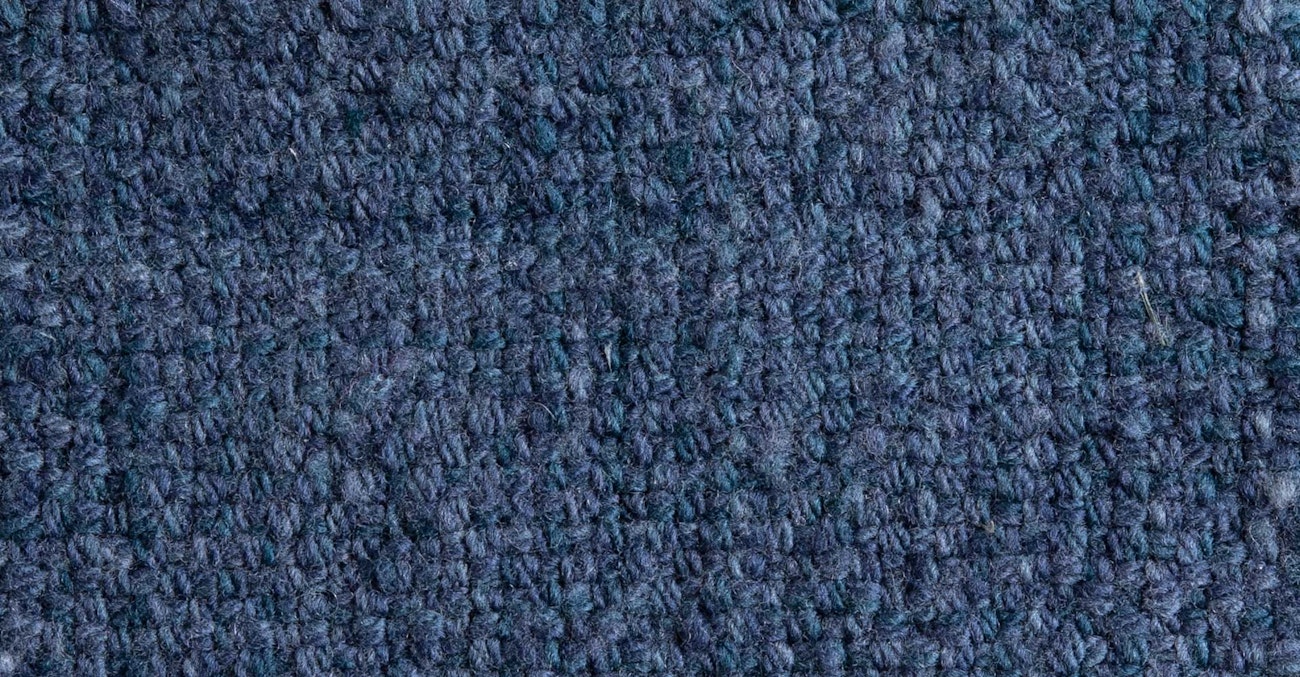
Sample 1: Plain Weave on a Pin Loom. Photos by Matt Graves unless otherwise noted.
Sample 1: Plain Weave on a Pin Loom
Sample Yarns: Cody, Denim and Spruce.
Setts: 8 epi; 8 ppi, yarn used doubled.
Shrinkage in length: 12.5%.
Shrinkage in width: 12.5%.
I frequently carry a pin loom for portable weaving, and I decided to see how Cody would work in that format. The setts of 8 ends per inch (epi) and 8 picks per inch (ppi) were loose for this size of yarn. I wove this sample using the yarn doubled, holding a strand of Denim and a strand of Spruce together. I wound the yarn loosely to allow for take-up on the weaving layer and packed the yarn carefully to keep the tension even. The sample does not show two distinct colors, but the dye variations within the skeins create depth and interest in the cloth. The finished square is a dense fabric that also has a little stretch. It would be perfect for sculpting stuffed toys or sewing into a cozy vest or pair of warm mittens.
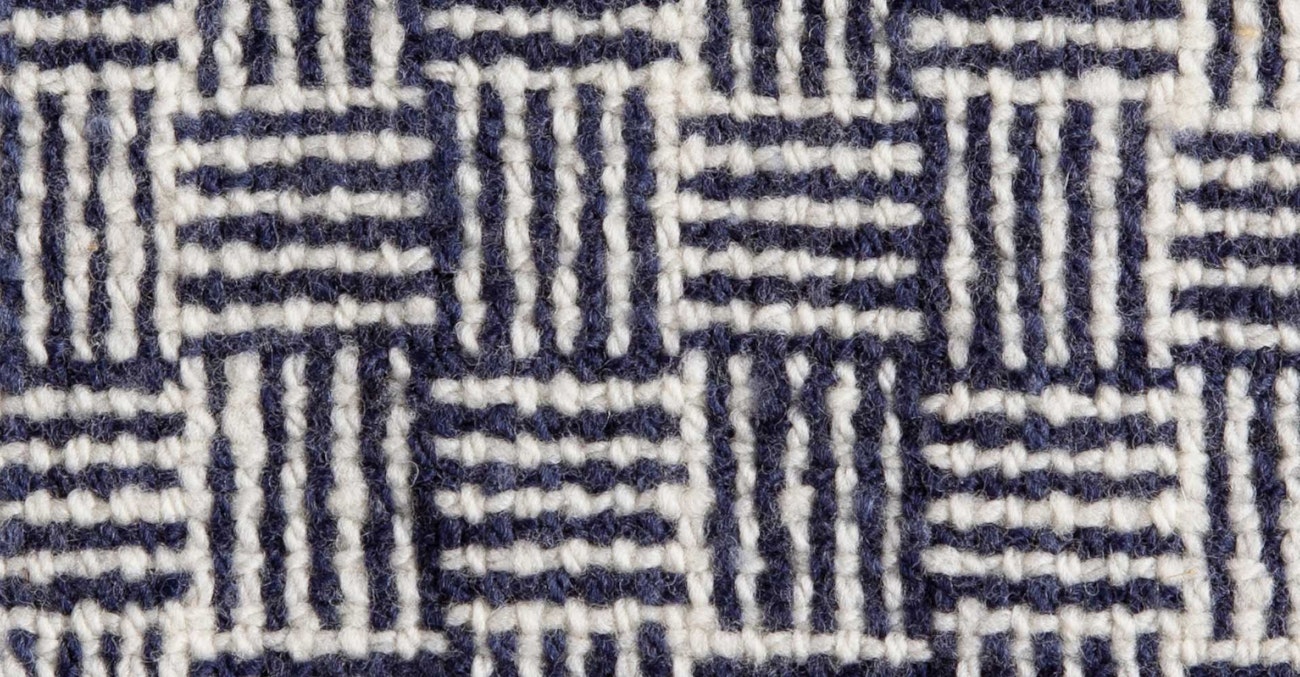
Sample 2: Log Cabin on a Rigid-Heddle Loom
Sample 2: Log Cabin on a Rigid-Heddle Loom
Sample Yarns: Cody, Navy and Natural Cream.
Setts: 10 epi; 10 ppi.
Shrinkage in length: 18%.
Shrinkage in width: 12.5%.
I prefer yarns with some elasticity for weaving on the rigid-heddle loom, and the stretch of Cody made it a good candidate. I beamed carefully for even tension. Cody weaves easily on the rigid-heddle loom. I wove samples at 7.5, 10, and 12.5 epi, beating for a balanced weave. The sample (shown at the right ) sett at 10 epi has a soft hand and drape, good for scarves or a snuggly lap blanket. The sample at 12.5 epi is a much tighter weave and a firm fabric suitable for a vest or bag. The sample at 7.5 felt loose right off the loom but washed up into a pleasant lightweight cloth that would also be good for a light scarf.
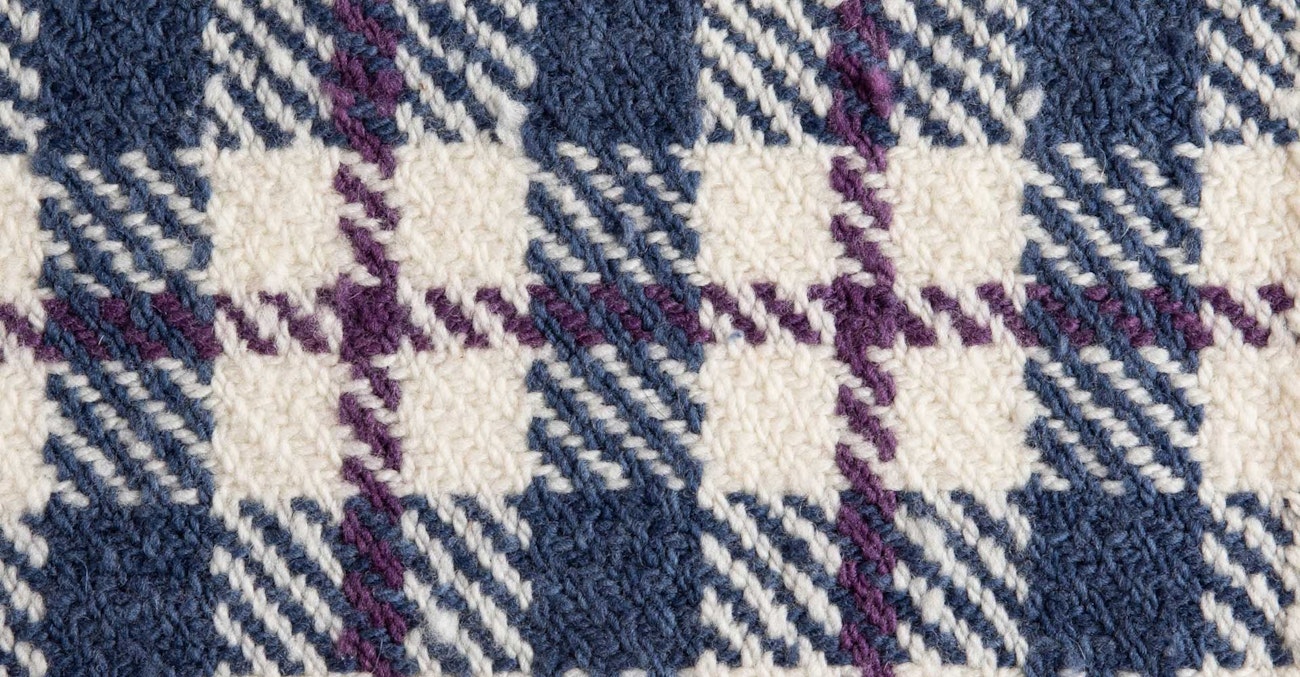
Sample 3: 2/2 Twill Plaid
Sample 3: 2/2 Twill Plaid
Sample Yarns: Cody, Natural Cream, Denim, and Pansy.
Setts: 12 epi; 12 ppi.
Shrinkage in length: 22%.
Shrinkage in width: 14%.
Rambouillet wool typically fulls and felts well, so I decided to try Cody in a fulled tartan twill. Even with vigorous agitation, my initial samples didn’t full as much as I expected, but I forged ahead and wove a 2/2 twill sett at 12 epi. I beat carefully to get a balanced weave as it was easy to beat too firmly. The resulting cloth is soft and stretchy, just right for making a great blanket to curl up in but not appropriate for an item that would undergo hard use.
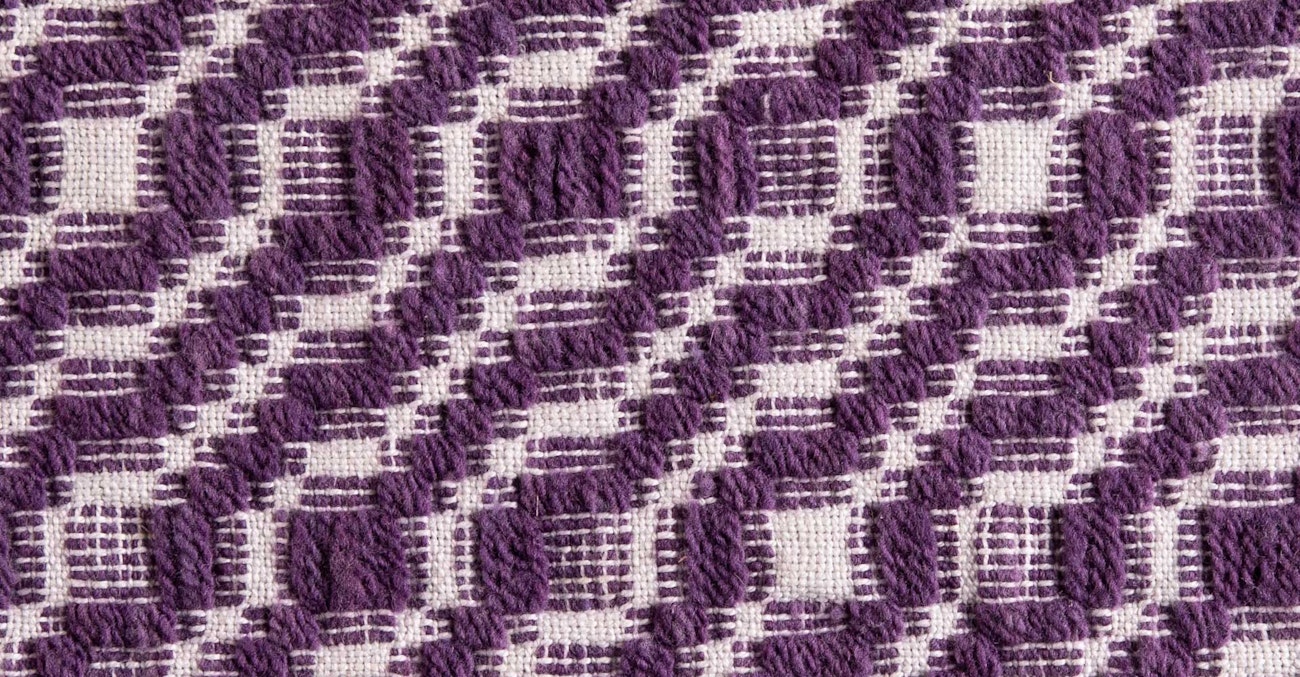
Sample 4: Overshot
Sample 4: Overshot
Sample Yarns: Ground: 10/2 unmercerized cotton (4,200 yd/lb), Mauve. Pattern weft: Cody, Pansy.
Setts: 20 epi; 40 ppi (pattern and tabby combined).
Shrinkage in length: 13%.
Shrinkage in width: 14%.
What could be better for this Wyoming yarn than Marguerite Porter Davison’s overshot pattern Pioneer Trail? Cody fills in nicely as a supplemental weft for overshot. It compresses well between shots of tabby and covers the solid blocks well. The resulting fabric is thick with a rich, dimensional surface. On one side, the twist in the yarn aligns with the diagonal in this pattern, giving it a slightly different effect than on the other side. Cody will work well for other supplemental-weft structures such as summer and winter or monk’s belt.
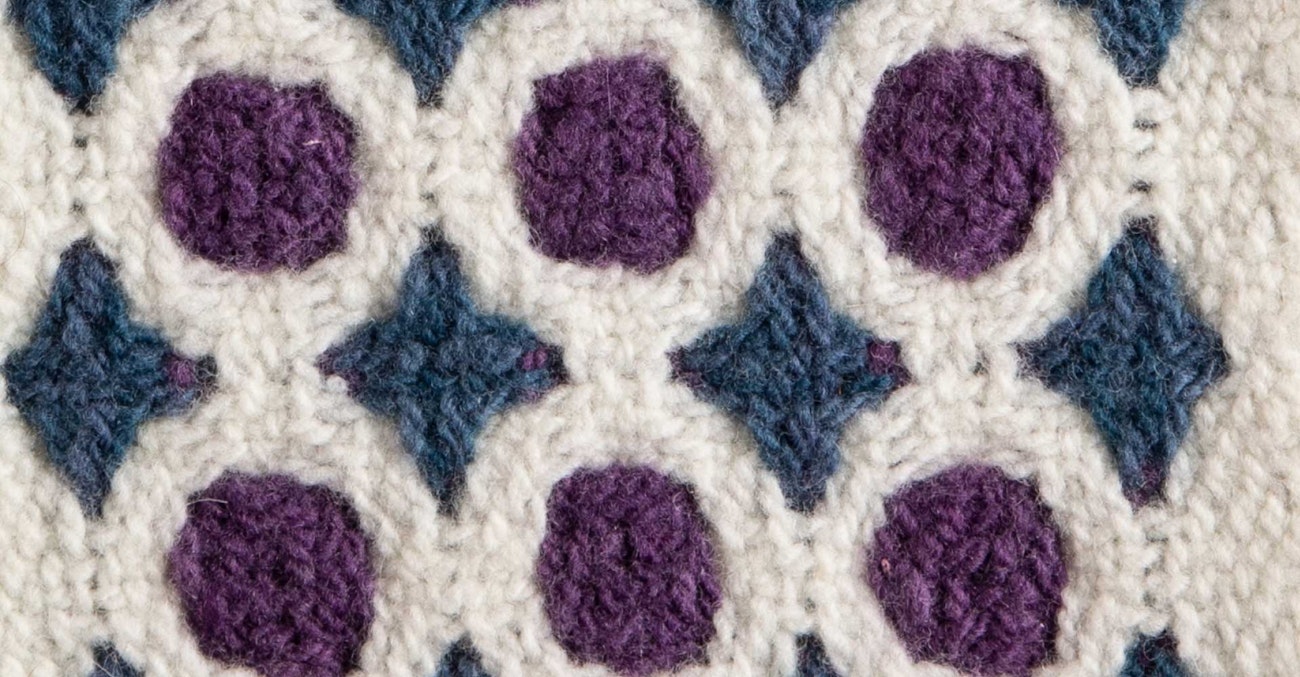
Sample 5: Deflected Doubleweave
Sample 5: Deflected Doubleweave
Sample Yarns: Cody, Natural Cream, Spruce, and Pansy.
Setts: 12 epi; 12 ppi.
Shrinkage in length: 29%.
Shrinkage in width: 29%.
For the last sample, I moved on to the eight-shaft loom for a little fun with color and patterning in deflected doubleweave. I kept the block sizes small at four ends, to reduce the amount of shifting needed in wet-finishing. I washed this sample more vigorously than the others, and the resulting fabric filled in well, creating crisp patterning and a thick fabric with firm body. I’d love to have this fabric for a coat.
Final Thoughts
Cody is well suited to fabrics meant for warmth and comfort. It handles easily but takes a little extra attention to wind the warp tension evenly due to its stretch. While neps looked like a problem during weaving, they didn’t cause major issues. The nice feel and sizable color range make Cody a good choice for warm wearables and blankets. Mountain Meadow’s practice of tracking fiber from source farm to finished yarn adds an extra dimension to our handmade textiles. I look forward to sampling other Mountain Meadow yarns.

